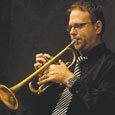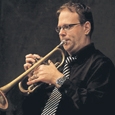Being the first-chair trumpeter in a high school band program can be somewhat daunting. These students face many responsibilities that band directors may easily take for granted, including leadership, superhuman chop strength, limitless high range, and making time to practice All-State auditions. These are exaggerations, but many teachers really do want these things from our top trumpeters, even if they do not consciously realize it.
The physical chop stress of playing first chair all year can be eliminated by ensuring these students always have good warm-up and warm-down time, as well as using a daily maintenance routine. While the function of the warm-up is well-known, a good warm-down is equally important. Trumpeters’ muscles will tighten after a long workout, just like the muscles of a runner after a marathon. The warm-down gives these muscles a chance to stretch and loosen before the instrument goes back in the case.
It is tempting for students just to pack up and race out the door after a long rehearsal or practice session. They are usually mentally and physically tired and have other things to do, including homework. However the result of this is muscles that are tight, rigid, and unresponsive the next day. The few minutes of warm-down are well worth the trouble.
To avoid performance injuries and bad performing habits arising in marching band, I would approach marching band from a concert band perspective, as far as playing is concerned. They need to play with a beautiful, rich sound, little tension, proper breathing, appropriate dynamics, and good posture. Students should also maintain excellent self-care routines for warm-up, warm-down, strength training, and lip care.
During the Marching Season
Playing on tired lips.
Students must avoid pushing their lips past their limit; otherwise, bruising or injury can result. If their lips are tired, trumpet players should dial back their performance level by playing softer and less aggressively and taking high parts down an octave when feasible. Doing this for one rehearsal will help them regain strength and avoid injuries that could take them away from the trumpet for much longer than a day.
Ideally, students should not play on sore lips; they are not professionals in a job, and there is no reason to flirt with the risk of injury. Crucially, though, if students experience embouchure pain when beginning to warm up for the day, they should take that day off from playing and not play until the pain is gone. If the pain lingers after four days, the student should consult a professional and, if the problem is not resolved, a doctor.
Switching to a high-note mouthpiece.
If lead trumpeters are unable to play the high notes on a standard symphonic mouthpiece, they should feel comfortable requesting to move to a lower part. While switching to a shallow high-note mouthpiece is an option, this can result in sound and technique problems.
Students who want to try the high-note mouthpiece should work with a professional player to make sure technique remains solid and that they are able to adapt to whichever mouthpiece they are using at the moment.
Intonation.
The temperature difference between outside and inside can greatly affect the trumpet’s intonation. Students will need to adjust carefully with the tuning slide and listen to make sure they are in tune with the group.
Sweaty hands.
Sweat contains moisture and acids that can eat away the finish on a brass instrument. After each practice, but especially after outdoor rehearsals, students should wipe down their instrument, so that it stays looking good.
Dehydration or over-hydration.
Students need to drink enough water to avoid dehydration, heat exhaustion, and possibly passing out. However, if they drink too much water they can become sick from an imbalance of electrolytes.
Trumpet safety.
Students seem to think that their instrument will be safe wherever they put it – from the concrete field they are marching on to the grass. However, the only safe place for an instrument is in the case. Students should take cases with them to the field and return the instruments to the cases when they are on break and at the end of rehearsal.
Returning from Marching Band to Concert Playing
Trumpet angle.
Many times the high trumpet angle from marching band carries over into the concert band. Directors should watch for this and remind students to readjust their head and trumpet angle when returning to seated playing.
Hand position.
When on the field, students often change their hand position to balance the weight of the instrument or alleviate pressure problems. For example, some players adjust their left hand to hold the instrument with only the thumb and first two fingers and may put their pinky in the hook to add pressure on the high notes. When returning to the concert band setting, the traditional hand position is preferred. This position allows for greater ease of moving slides, healthy mouthpiece pressure, and increased agility in the right hand.
Over-playing the instrument.
Trying to fill the entire stadium with your sound can be a big job. When students move from the stadium to the concert hall they will often need to adjust their dynamic levels back.







